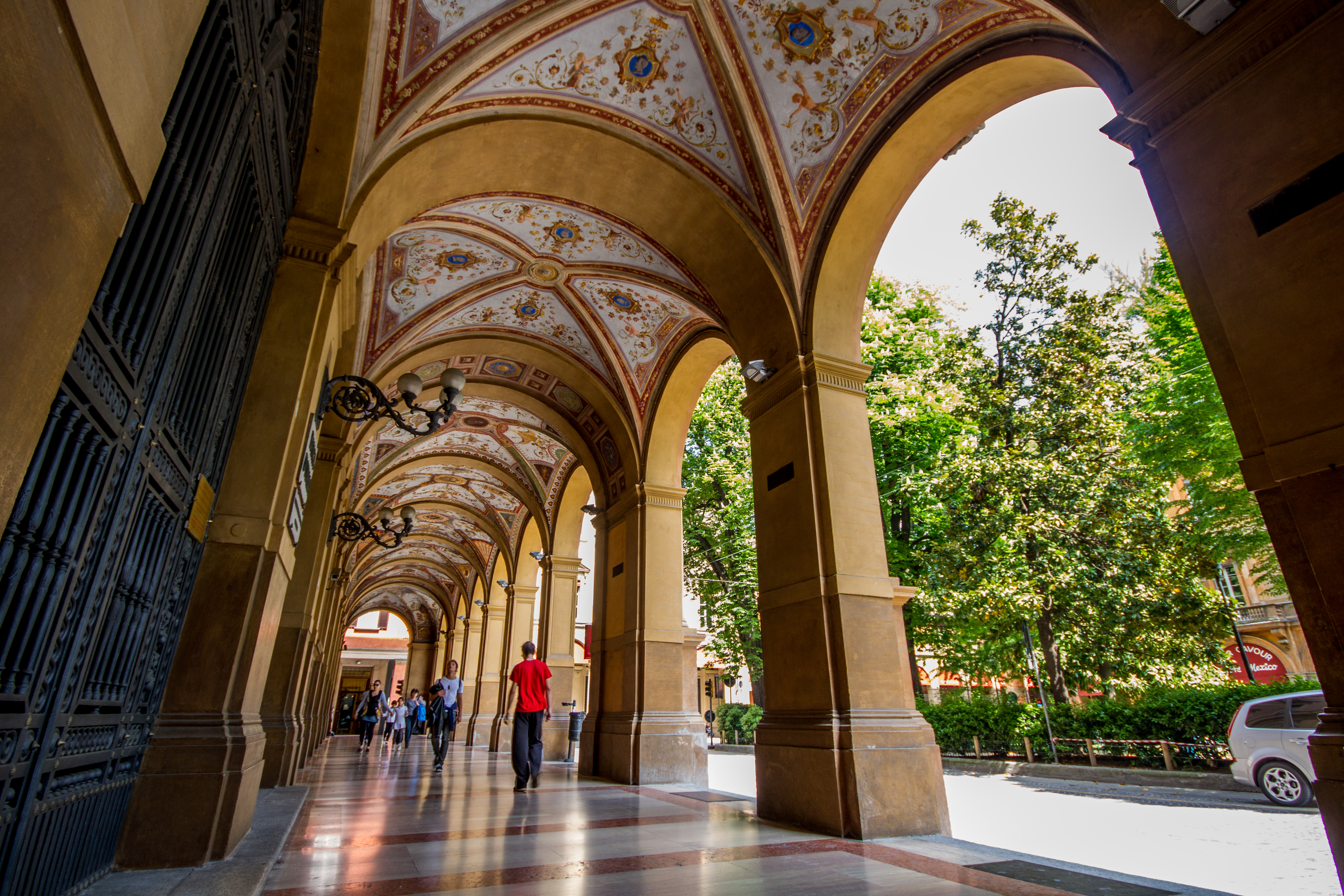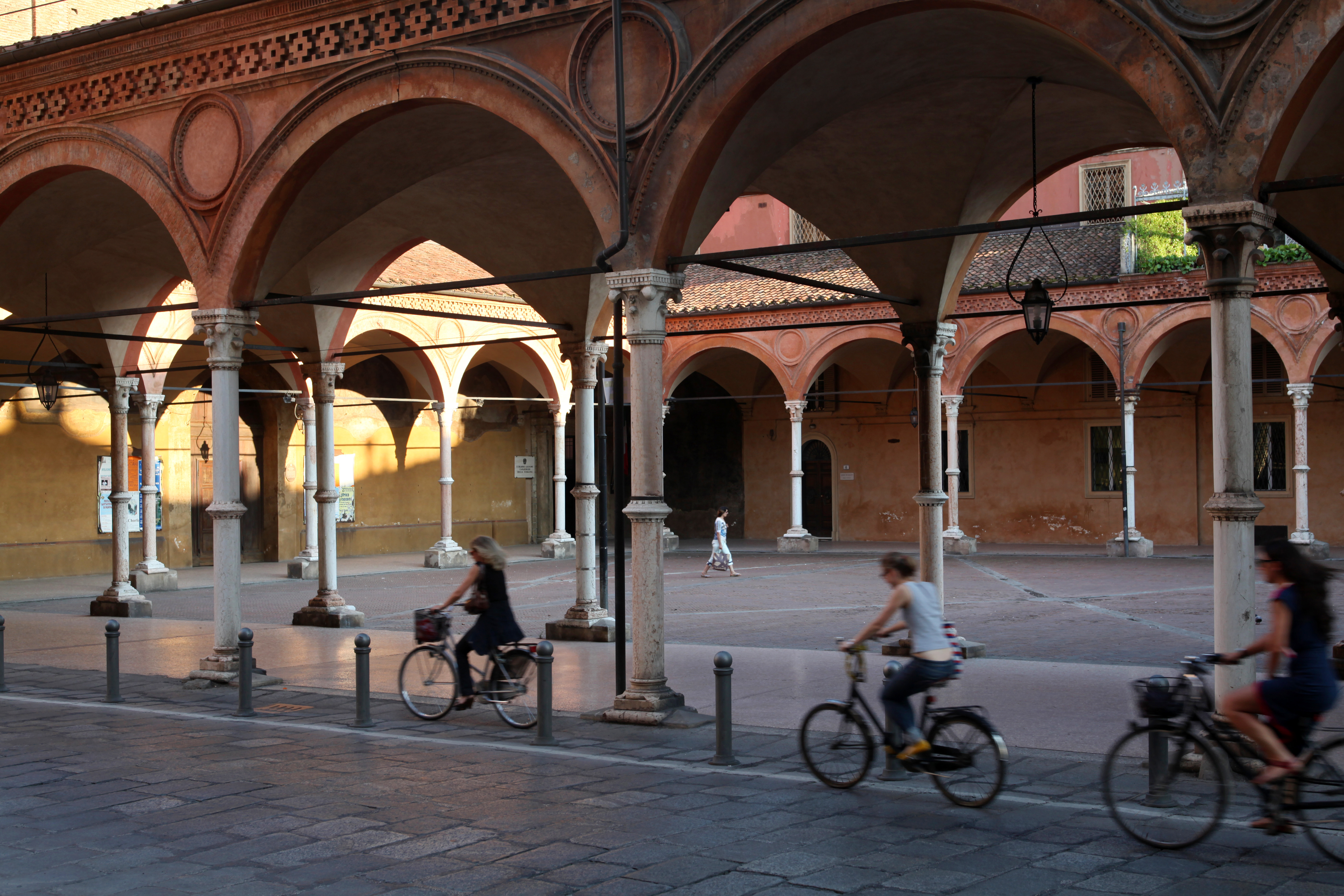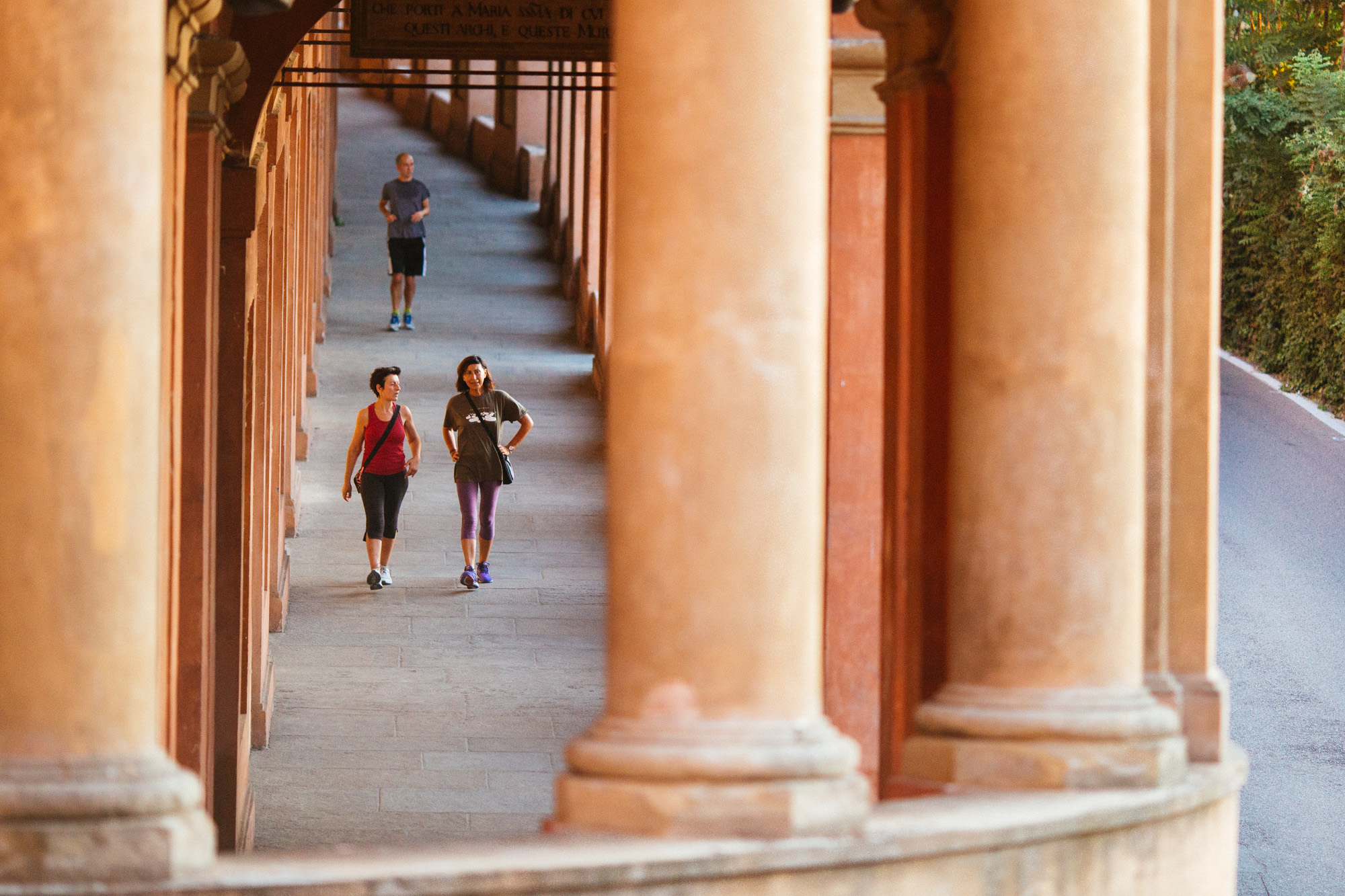Curiosities about Bologna's Porticoes
Updated on 31 October 2023 From Bologna Welcome
Inscribed as UNESCO “world heritage site", the porticoes of Bologna, almost 62 km long of which 40 km in the city centre, make the city of Bologna truly unique. Ever since 1100, when the growth of the University led to the need for new urban spaces, the porticoes have become private and public locations where people can socialise and trade, an open-air salon symbol of Bologna’s hospitality.

By taking a stroll through the city, you can encounter and appreciate various types of porticoes. From the wooden ones, such as the 13th century casa Isolani in strada Maggiore and the porticoes of via Marsala, to the 14th century "beccadelli”, semi-porticoes without columns, such as the one present on the rear façade of Palazzo d'Accursio and in Palazzo Ghisilardi-Fava.
The very tall portico 'dei Bastardini' in Via D'Azeglio, so called because an orphanage was housed under its vaults until 1797, and the portico of the Archiginnasio, known as the 'Pavaglione', are well known.
The widest portico of the city is the four-sided portico of the basilica of S.Maria dei Servi in Strada Maggiore, designed at the end of the 14th century, and the narrowest, with its 95 cm, is located in via Sanzanome.
The tallest portico in Bologna is the Portico of Zanichelli, a well-known Bolognese publishing house, on via Irnerio, at 12.94 metres (in the highest part of the coffered ceiling). It is a novelty in the collective imagination because it is often attributed to the 10.02 metre Portico in via Altabella, or to the 12.58 metre wooden Portico of Casa Isolani, in strada Maggiore.

Beyond the avenues the long porticoed path of via Saragozza begins, which is the start of the most famous portico in the city as well as the longest in the world, leading to the Sanctuary of the Madonna of San Luca. From the first arch of porta Saragozza (Bonaccorsi), you arrive halfway to the Arco del Meloncello and then go up to Monte della Guardia. The portico is made up of 666 arches and measures almost 4 km.


